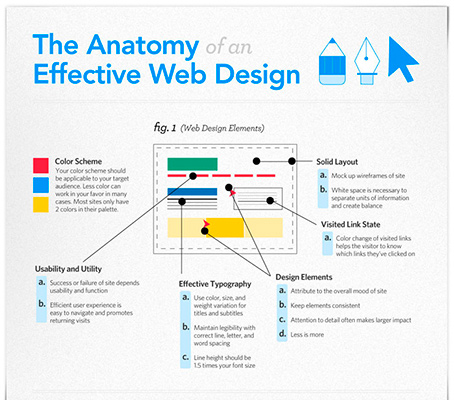Fascinated In Learning Exactly How Internet Site Design Has Developed For Many Years? Explore The Journey From Basic, Simple Layouts To User-Centric Interfaces That Focus On The Visitor'S Experience
Fascinated In Learning Exactly How Internet Site Design Has Developed For Many Years? Explore The Journey From Basic, Simple Layouts To User-Centric Interfaces That Focus On The Visitor'S Experience
Blog Article
Material Author-Carstens Gibbons
In the past, internet sites were easy and concentrated on details. Navigating was direct, and design was for desktop computers. Now, individual experience is key. Information guides designs for simple navigation. Responsive formats fit various devices. Today, dark mode lowers pressure, and minimalist food selections improve navigation. Interactive functions engage customers, and strong visuals stick out. AI integration enhances involvement. See just how layout has progressed to improve your on-line trip.
Very Early Days of Website Design
In the early days of web design, simplicity preponderated. Web sites were fundamental, with restricted colors, typefaces, and formats. The focus was on supplying info instead of fancy visuals. Users accessed the internet with sluggish dial-up connections, so rate and performance were essential.
Navigation menus were straightforward, normally situated at the top or side of the web page. Internet sites were created for home computer, as mobile surfing had not been yet common. Content was king, and designers prioritized very easy readability over intricate style aspects.
HTML was the main coding language used, and developers had to work within its restraints. Animations and interactive features were minimal compared to today's standards. Internet sites were fixed, with little vibrant material or individualized customer experiences.
Surge of User-Focused Design
With the development of internet site design, a change in the direction of user-focused style principles has come to be significantly famous. Today, creating internet sites that focus on individual experience is important for involving site visitors and achieving company goals. User-focused design involves recognizing the needs, preferences, and actions of your target audience to tailor the web site's layout, content, and includes accordingly.
Developers currently conduct thorough study, such as user surveys and usability screening, to gather insights and feedback directly from customers. This data-driven technique helps in producing instinctive navigation, clear calls-to-action, and visually attractive user interfaces that reverberate with visitors. By positioning the individual at the center of the style procedure, internet sites can deliver a more tailored and pleasurable experience.
https://videomarketingspecialists49505.develop-blog.com/36222561/enhance-your-company-with-proven-internet-marketing-solutions has additionally become a vital element of user-focused layout, making certain that internet sites are optimized for numerous tools and display dimensions. This versatility improves ease of access and functionality, satisfying the diverse methods users engage with internet sites today. Essentially, weblink of user-focused design signifies a change towards developing digital experiences that focus on the demands and assumptions of the end individual.
Modern Trends in Website Design
Discover the most up to date patterns shaping web design today. One noticeable trend is dark mode layout, offering a streamlined and modern-day look while decreasing eye pressure in low-light environments. One more key trend is minimalist navigation, streamlining menus and boosting user experience by concentrating on essential elements. Integrating micro-interactions, such as animated switches or scrolling impacts, can produce a more interesting and interactive internet site. Responsive style remains critical, guaranteeing seamless customer experiences throughout numerous tools. Additionally, utilizing bold typography and unbalanced designs can include visual rate of interest and draw attention to specific content.
Integrating organic search engine optimization services , like chatbots for consumer support or customized referrals, improves user involvement and streamlines processes. Ease of access has likewise come to be a considerable pattern, with designers focusing on comprehensive design practices to satisfy varied user demands. Embracing sustainability by maximizing site efficiency for rate and effectiveness is another emerging trend in website design. Teaming up with user comments and data analytics to iterate and improve layout constantly is crucial for remaining appropriate in the ever-evolving electronic landscape. By embracing these contemporary patterns, you can develop a visually appealing, user-friendly web site that resonates with your audience.
ada website accessibility requirements
As you assess the development of site layout from the very early days to now, you can see just how user-focused style has actually come to be the driving pressure behind modern trends.
Welcome the trip of adjustment and adaptation in website design, constantly maintaining the user experience at the leading edge.
Keep current with the current trends and technologies, and never ever quit developing your strategy to produce aesthetically magnificent and easy to use websites.
Advance, adapt, and produce - the future of website design remains in your hands.
